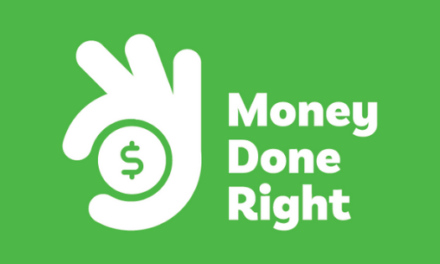Even a one-person operation needs to make sure their content is accurate, spelled correctly, and grammatically correct.
About 100 years ago, a creator made a mistake that I just saw referenced on Twitter.
An engraver carved a letter “E” where he should have made an “F” in the word “FUTURE” on the north wall of Lincoln Memorial in Washington, D.C.
Though the mistake was corrected by filling in the bottom line to revert the E into an F, the error remains visible to those who look closely.
Though your mistakes won’t be carved in stone, that doesn’t mean you shouldn’t strive to create error-free content. To develop loyal audiences – or just have people trust your content – your content should be factually accurate, properly attributed, spelled and pronounced correctly, and grammatically proper.
Just because your creation mistakes aren't carved in stone (like the Lincoln Memorial) doesn't mean you shouldn't strive for error-free content. #contentcreator #ContentEntrepreneur Share on XThat can seem daunting in a solo or small business, but that doesn’t mean you can ignore it and hope for the best. Instead, create a plan to attack it and make a checklist to ensure every piece of content published has been reviewed.
Tilt Advice
First, realize you can’t research, create, fact-check, proof all at the same time. Create a production schedule that allows time to complete each task separately.
You can't research, create, fact-check, and proof at the same time. Create a production schedule with time for each task, says @AnnGynn. #contentcreators #creatoreconomy #contentbusiness Share on XResearch phase: Use reliable sources. For example, if you cite a statistic, don’t just link to another article that includes that statistic. Go to and cite the native source. You may find the original source didn’t even include that stat. (I find statistic sharing like a game of a telephone. By the time the third outlet is “telling” it, the data has been misinterpreted or altogether wrong.)
If you plan to make a claim, share an anecdote, or use other information from a third party, document the source links in your notes.
Creation phase: So you don’t have to go back and correct mistakes when you’re done, work a little harder when you create the content. Follow a style guide to ensure consistency. If you create videos, take the time to draft a script so you can vet the information and know the correct pronunciations of tricky words. Even a TikTok video is worthy of a little preparation. (You don’t have to do a word-for-word script. The point is to know where you’re going and what you’re talking about so you don’t trip up when you hit record or go live.)
Post-creation phase: I call this the double-check phase. After all, you didn’t intentionally plan to create mistakes in your content, but chances are errors were made. Proofread for grammar and spelling by starting with the last sentence first. (You’re more likely to catch a mistake if you aren’t reading it in context.) There are several helpful edit editing and grammar tools available too. (Though, don’t blindly accept every change they suggest. In some cases, the AI software may interpret your words differently from your intention.) Enlist some help too. Contract with one proofreader or reviewer, so they learn your content, style, preferences, etc. Don’t have the budget to do that? Consider trading proofing services with another content creator.
Don't have a budget to hire a proofreader? Consider trading services with another content creator, says @AnnGynn. #proofing #contentbusiness Share on XPost-publishing phase: Even with all those preventative steps, mistakes can still slip through. (Just ask JK Rowling, whose Harry Potter and the Philosopher’s Stone included an erroneous duplicate item on Harry’s school supply list in the print version.) Often, these will be discovered by your viewers or readers.
When (not if) this happens, edit the published content as expeditiously as possible. If the error was significant, note the fix at the top of the content: “This article has been updated to reflect the accurate statistics from the survey.”
If you can’t easily update the content (i.e., videos), decide if the mistake is significant that you should redo the content or pull it down entirely. If the error is minor, you could note the mistake and the fix by updating the descriptive text around the more permanent content.
And don’t forget to acknowledge the person(s) who found the error. Give them a shoutout publicly and let them know the steps you took to fix the problem. (And if you have someone who’s really, really good at finding mistakes, think about bringing them on board.)
Mitigating and addressing mistakes from research through publication won’t earn you thanks from your audience, but being a credible content provider will earn their respect and perhaps loyalty.
We just launched The Tilt Toolbox with over 50 tools separated into categories, from note-taking and research to SEO and project management. Learn about what’s free, what requires a subscription, and the pros and cons of every one.
About the author
Ann regularly combines words and strategy for B2B, B2C, and nonprofits, continuing to live up to her high school nickname, Editor Ann. An IABC Communicator of the Year and founder of G Force Communication, Ann coaches and trains professionals in all things content. Connect with her on LinkedIn and Twitter.










